Are you looking to renovate your home’s bathrooms but you do not know how to plan for bathroom renovations? If so, this article is for you.
In this article we will go over common reasons to renovate a bathroom, how to plan out your budget, the importance of doing your research, how to proceed with preparation and planning, and how to keep your bathroom looking brand new.
Click on each corresponding link to jump ahead:
- Reasons to Renovate – Improved functionality and aesthetic
- Planning Your Budget – Assess your finances and set priorities
- Research Businesses – Find recommendations and read reviews
- Preparation and Planning – Finalize your contract and set a start date
- Regular Cleaning and Maintenance – Establish a routine and use mild cleaners
If you want to start the journey to renovating your bathroom today, contact Graham’s & Son Interiors for a free consultation
Planning Bathroom Renovations
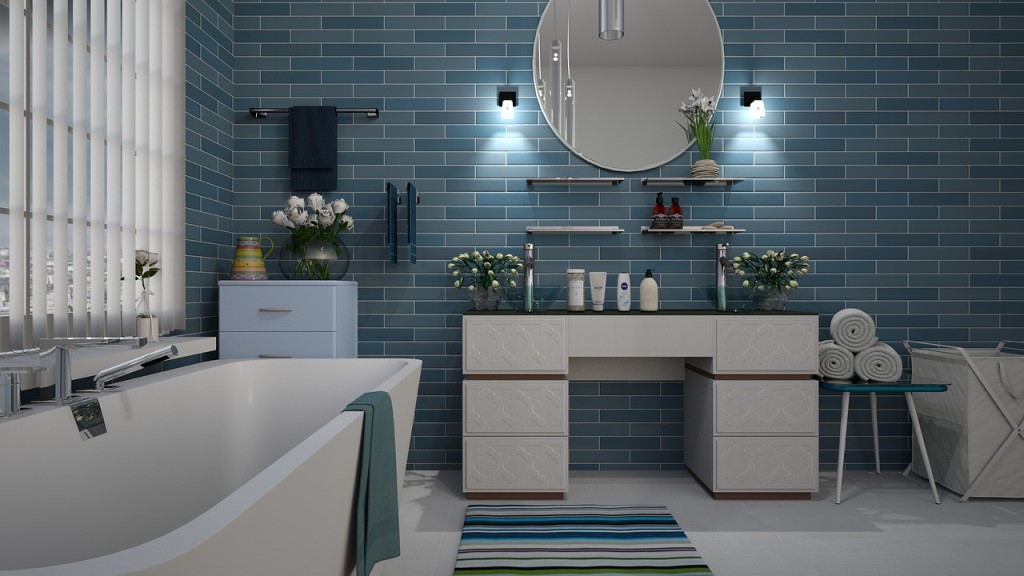
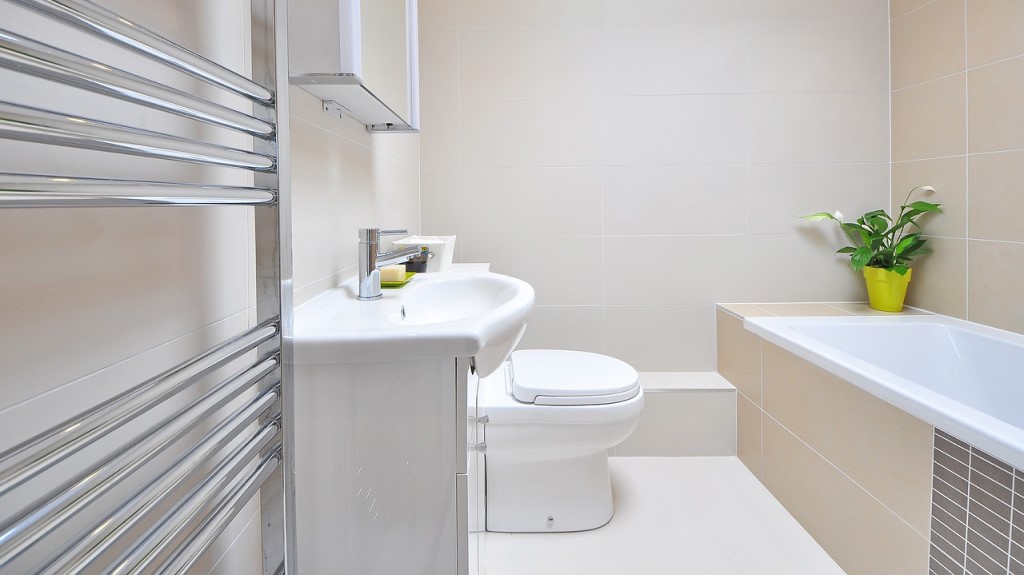
Continue reading to learn more about bathroom renovations.
1. Reasons to Renovate
Before we dive in to how to plan your bathroom renovations, let’s examine some of the common reasons why people decide to renovate their bathroom in the first place.
A) Improved Functionality
One of the primary reasons people renovate their bathrooms is to enhance its functionality. Over time, the needs of a household can change, and a bathroom renovation allows you to tailor the space to meet those changing needs. For example, you may need additional storage, better lighting, or an updated layout to make your daily routines more efficient.
B) Aesthetic Upgrades
Bathrooms can become outdated in terms of design and aesthetics. Renovating your bathroom gives you the opportunity to update the look and feel of the space. You can choose modern fixtures, new tiles, and a fresh colour palette to create a bathroom that reflects your personal style.
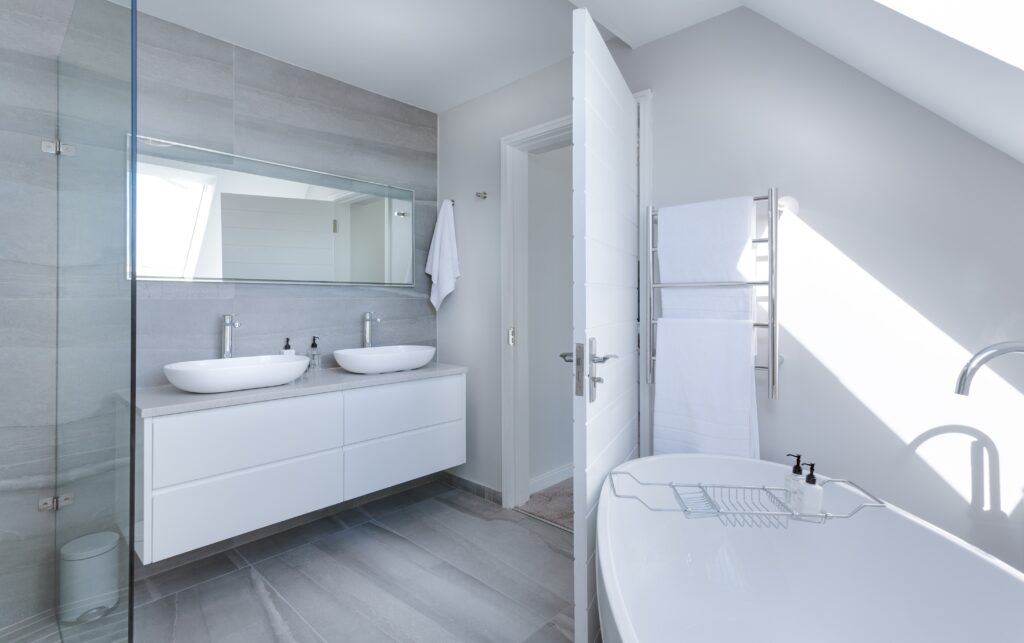
Bathroom renovations completely transform your overall aesthetic.
C) Increased Home Value
A well-executed bathroom renovation can significantly increase the value of your home. Buyers are often willing to pay more for homes with updated and stylish bathrooms. So, if you have plans to sell your home in the future, a bathroom renovation can be a smart investment.
D) Energy Efficiency
Older bathrooms may have outdated plumbing or light fixtures that aren’t very energy-efficient. By renovating, you can install water-saving plumbing, energy-efficient lighting, and better insulation, which can lead to reduced utility bills over time.
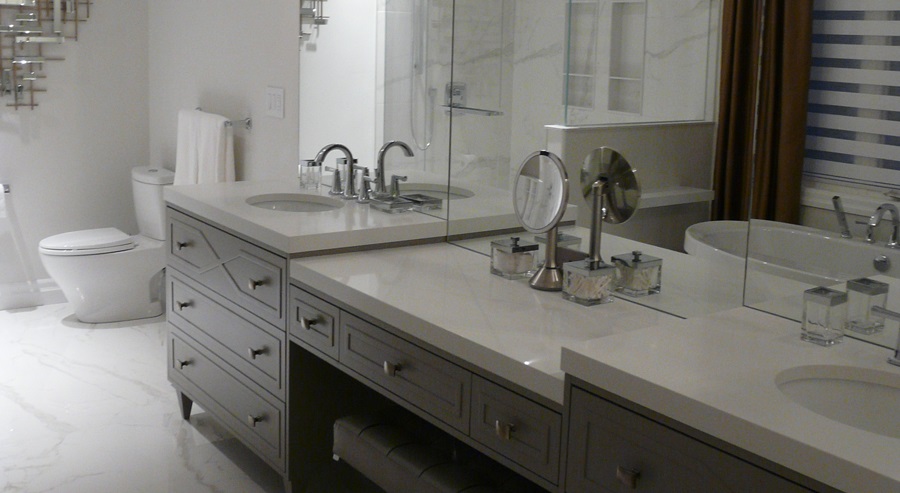
Perhaps you want to promote energy efficiency via a new toilet.
E) Enhanced Comfort and Relaxation
Your bathroom should be a place of comfort and relaxation. Renovation can create a spa-like atmosphere with features such as a luxurious shower, a soaking tub, or heated flooring. A more comfortable bathroom can also contribute to your overall well-being.
F) Safety and Accessibility
For older adults or individuals with mobility issues, bathroom renovations can be essential to make the space safer and more accessible. Installing grab bars, non-slip flooring, and a walk-in shower or bathtub can greatly improve safety and convenience.
Now that you have a good understanding of some of the common reasons for bathroom renovations, let’s take a look at the next step in the process, planning your budget.
2. Planning Your Budget
Planning your budget is the crucial first step in any bathroom renovation project. It sets the financial framework for the entire endeavour, helping you make informed decisions and ensuring that you stay on track throughout the renovation process. Here’s a detailed explanation of how to plan your budget for a bathroom renovation:
A) Assess Your Finances
Start by examining your overall financial situation. Determine how much you can comfortably allocate to your bathroom renovation without straining your finances. Consider your savings, available credit, and any other sources of funding.
B) Set Priorities
Identify your renovation priorities. Decide which aspects of the bathroom renovation are non-negotiable and which are more flexible. Prioritize essential changes like fixing structural issues, addressing safety concerns, or upgrading plumbing and electrical systems.
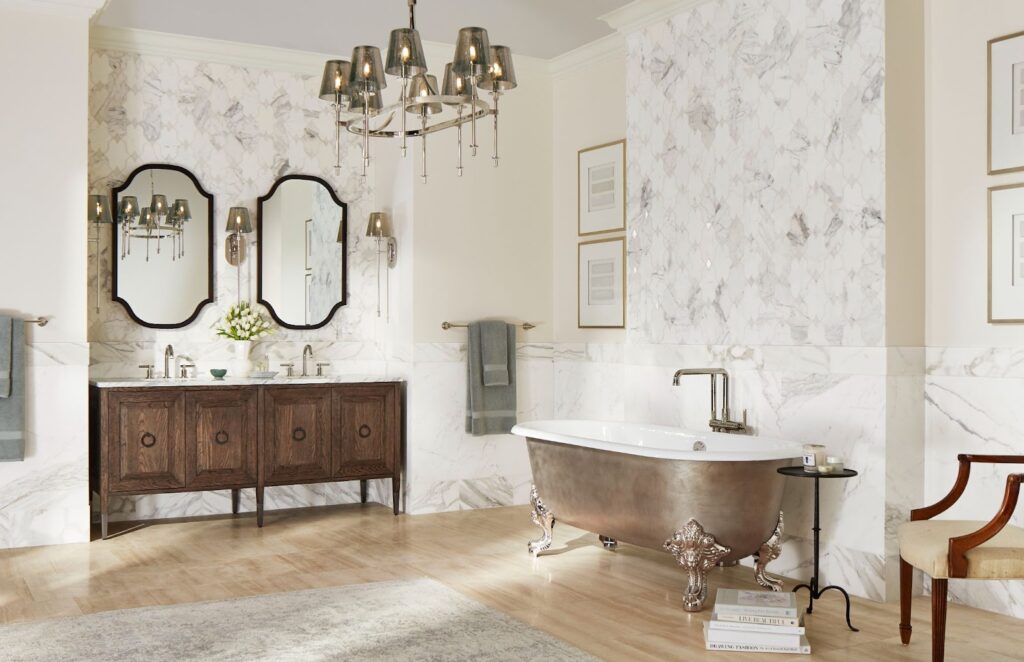
Based on your bathroom renovations budget, you may have to choose between a beautiful soaker tub or a double sink vanity.
C) Research Costs
Research the average costs of bathroom renovations in your area. Keep in mind that costs can vary significantly based on factors like location, the size of the bathroom, and the level of customization you desire. Online resources, contractor estimates, and conversations with other homeowners who have renovated their bathrooms can be valuable sources of information.
D) Create a Detailed Budget
Break down your budget into specific categories, including:
- Labor Costs: Estimate how much you’ll need to pay contractors, plumbers, electricians, and any other professionals involved in the renovation.
- Materials and Fixtures: Account for expenses related to tiles, flooring, countertops, cabinets, plumbing fixtures, lighting, and any other materials you plan to use.
- Permits and Fees: Don’t forget to budget for any necessary permits, inspections, or other fees required for the renovation.
- Contingency Fund: Set aside a contingency fund of about 10-20% of your total budget to cover unexpected expenses that may arise during the renovation.
- Design and Planning Costs: If you’re working with a designer or architect, include their fees in your budget.
- Finishing Touches: Consider costs for paint, accessories, mirrors, and other finishing touches that complete the look of your bathroom.

Is there room in your budget for wooden accents and a large mirror?
E) Make Trade-offs and Adjustments
If your initial budget exceeds your available funds, you may need to make trade-offs or adjustments. Consider alternatives for materials or fixtures that are more budget-friendly. You can also choose to tackle the renovation in stages, focusing on the most critical elements first and saving less essential upgrades for later.
F) Stick to Your Budget
Perhaps the most important step is to adhere to your budget as closely as possible. Avoid making impulsive decisions or costly changes mid-project, as they can quickly inflate your expenses.
Planning your budget carefully at the beginning of your bathroom renovation project is essential for a successful and stress-free experience. It allows you to make informed choices, prioritize your spending, and achieve the bathroom of your dreams without breaking the bank.
Now, let’s take a look at the next step for bathroom renovations, researching businesses.
3. Research Businesses
Researching businesses is the next important step in renovating a bathroom. This step involves finding and evaluating contractors, suppliers, and service providers who will be instrumental in executing your bathroom renovation project. Here’s a detailed explanation of how to research businesses for your bathroom renovation.
A) Start Early
Begin your research well in advance of your planned renovation start date. This will give you ample time to find the right businesses and professionals for your project.
B) Ask for Recommendations
Seek recommendations from friends, family, neighbours, and colleagues who have recently undertaken bathroom renovations. Personal referrals are often a reliable way to find trustworthy businesses.

Visit your friends or families houses that have recently undertaken bathroom renovations.
C) Search Online
Conduct an online search to identify local businesses and contractors specializing in bathroom renovations. Use search engines, online directories, and social media platforms to compile a list of potential options.
D) Check Reviews and Ratings
Look for online reviews and ratings of the businesses you’re considering. Websites like Google Reviews, Facebook, Yelp, and Better Business Bureau can provide insights into the experiences of previous customers. Pay attention to both positive and negative feedback.

E) Interview Contractors and Service Providers
Contact the contractors and service providers on your list to schedule interviews or consultations. During these meetings, ask about their experience, expertise, and portfolio of previous bathroom renovation projects. Inquire about the following:
- References: Request references from past clients and follow up with them to learn about their experiences.
- Insurance and Licensing: Confirm that they have the necessary insurance coverage and any required licenses.
- Timelines: Ask about their availability and estimated project timelines.
- Cost Estimates: Request detailed cost estimates for your specific project, including labor and materials.
G) Stay in Touch
Maintain open and regular communication with the businesses and professionals you hire. This helps ensure that the project stays on track and that any issues or concerns are addressed promptly.
By thoroughly researching businesses and professionals for your bathroom renovation, you can make informed decisions and choose the right team to bring your project to life. This step is critical for a successful renovation that meets your expectations in terms of quality, timeline, and budget.
Now, let’s take a look at the next step in the process, preparation and planning.
4. Preparation and Planning
After you have selected a renovation company for your bathroom project, the next step is to proceed with the preparation and planning phase of your renovation. This phase involves several key tasks to ensure that your project goes smoothly. Here are the steps to take.
A) Finalize the Contract
Work closely with your chosen renovation company to finalize the contract. Ensure that all project details, specifications, timelines, and costs are clearly outlined in the contract. Read and understand the terms and conditions before signing.
B) Secure Permits and Approvals
If your renovation requires building permits or approvals from local authorities, work with your contractor to obtain these. The contractor should be familiar with local building codes and regulations and can guide you through the process.

Make sure you have sorted out your permits and approvals prior to your bathroom renovations.
C) Set a Start Date
Coordinate with your renovation company to set a start date for the project. This date should take into account the availability of materials, subcontractors, and any special considerations for your renovation.
D) Create a Project Timeline
Develop a detailed project timeline with your renovation company. This timeline should outline key milestones, such as demolition, plumbing and electrical work, installation of fixtures, and finishing touches. Having a clear schedule will help you track progress throughout the renovation.
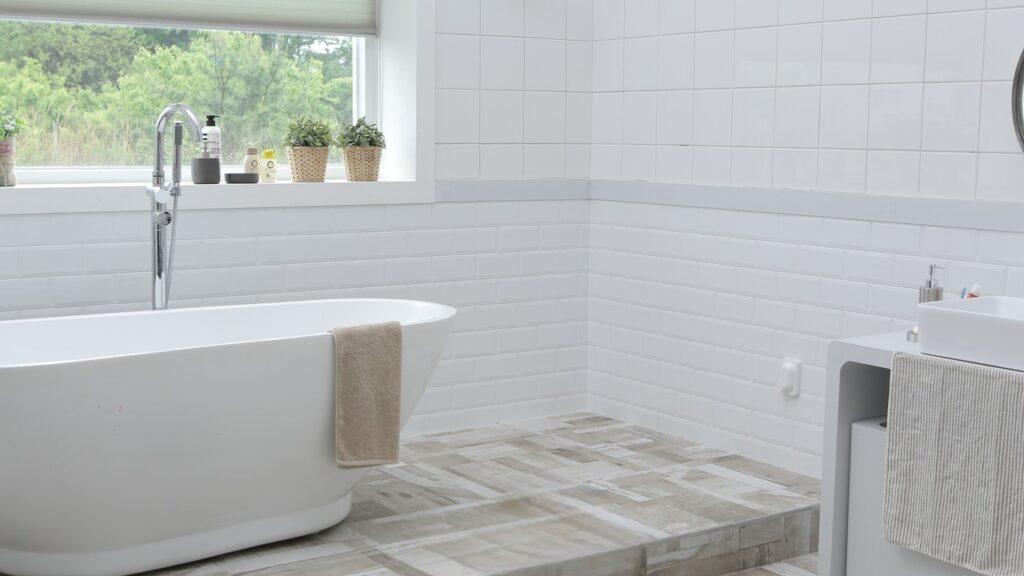
A realistic timeline will lead to less stress and more happiness.
E) Prepare the Space
Before the renovation begins, clear the bathroom and any adjacent areas that might be affected. Remove personal items, furniture, and belongings from the bathroom and nearby rooms to create a clean, unobstructed workspace.
G) Be Flexible
Be prepared for unexpected surprises or delays that may arise during the renovation. Renovation projects can sometimes uncover hidden issues that need to be addressed, so flexibility is essential.
By following these steps in the preparation and planning phase, you’ll be well-prepared for the actual renovation work to begin. Effective communication, attention to detail, and collaboration with your chosen renovation company are key to a successful bathroom renovation.
Now, let’s examine how to keep your bathroom looking new.
5. Regular Cleaning and Maintenance
Keeping your newly renovated bathroom looking great requires regular cleaning and maintenance. Here are some tips to help you maintain the cleanliness and appearance of your new bathroom.
A) Establish a Cleaning Routine
Create a regular cleaning schedule for your bathroom. Consistency is key to preventing the buildup of grime and dirt.
B) Use Mild Cleaners
Choose mild, non-abrasive cleaners that are suitable for the surfaces in your bathroom. Harsh chemicals can damage finishes and fixtures over time.
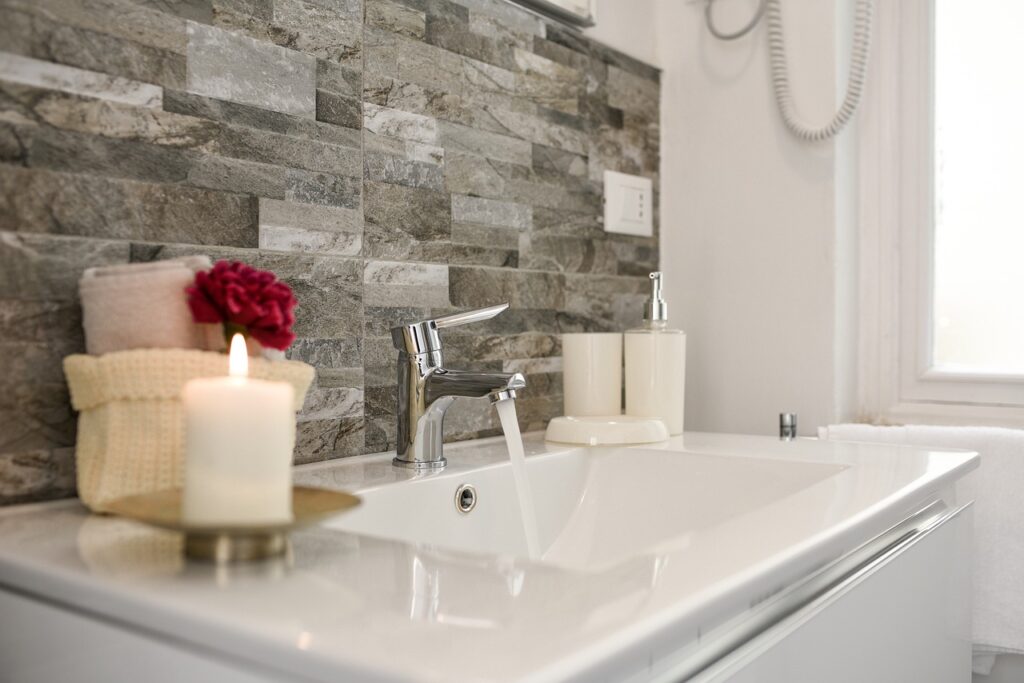
Clean your bathroom and light a candle when it is all said and done.
C) Clean from Top to Bottom
Start your cleaning routine by dusting or wiping down any overhead surfaces like light fixtures and vents, then work your way down to countertops, sinks, and finally the floor.
D) Clean Tiles and Grout
For tiled surfaces, use a tile and grout cleaner to remove soap scum, mildew, and stains. Scrub the grout lines with a grout brush to keep them looking clean.
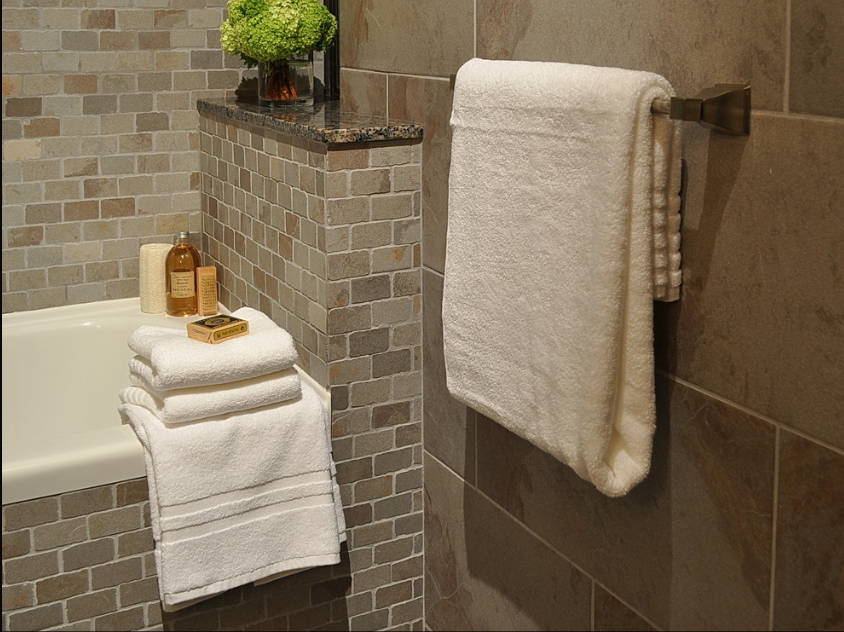
If you have a tile shower, make sure you use a tile and grout cleaner on a regular basis.
E) Prevent Water Spots
To prevent water spots on glass shower doors and mirrors, squeegee them after each use. This helps reduce the buildup of mineral deposits.
F) Ventilation is Key
Use the bathroom fan or open windows during and after showers to reduce moisture buildup. Proper ventilation helps prevent mold and mildew growth.
By following these cleaning and maintenance tips, you can keep your new bathroom looking fresh and beautiful for years to come. Consistent care and attention will help preserve the quality and aesthetics of your renovation.
Trust Graham's & Son Interiors for Bathroom Renovations

If you would like to renovate your bathroom, or if you have any questions regarding bathroom renovations, contact the professionals at Graham’s & Son.
With almost 50 years of experience in the home interior industry, you’ll appreciate our knowledge of quality products and the customer service you receive when you have your window treatment installed by Graham’s. We provide Free In-Home Consultations and take care of the Measurements, Product Ordering, and Installation. Contact us today to select the window treatments that suit your style and budget.
We are locally owned and operated and we can provide you with gorgeous and practical window treatments for any room in your home. We will give you expert advice, quality, custom-made products, and top-notch customer service.


